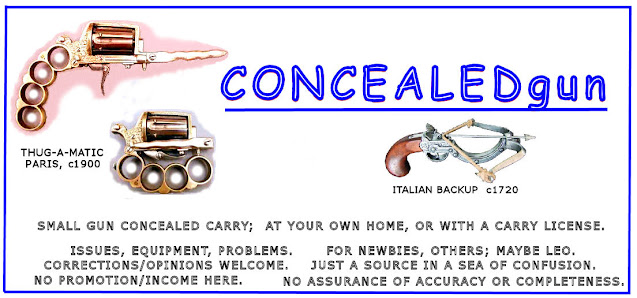To get an indication of bone/barrier penetration, the tests I found online
were not sufficient, so I built a rig out of sched 40 iron piping, with branches
terminated using lawn-mower mufflers, and the gun firing through a 1.75" port.
The test pieces are 2" dia poplar, 5" long, just 10" from the gun muzzles.
The test pieces are backed by a 1.25" pipe cap ground to fit reversed inside
the 2" pipe, then supported by a 1.25" plug, in turn supported by a 2" pipe cap.
(The rig weighs about 70lb. The 380 noise two feet to side is 104 dbc.)
For .32 acp full-jacket(S&B) fired from my Kel-Tec p32(2.68"barrel), typical
penetration was 2.7" with no yaw/keholing (no bulging or cracks in the wood
allowed). This seems adequate for me.
I did the same with .380 acp fmj(Fed Eagle) from my hated SW380 (3" barrel).
The typical .380 penetration was 3". Using my PK380(3.66" barrel),
penetration was 2.9" (Fed Eagle fmj).
It was a surprise that the PK was less than from the 3" blowback barrel.
But the PK only has 360 rounds fired, so the results might change with wear.
And it has twice the twist rate(9.5") than the Smith, with no yaw/keyholing
within 50ft. A point-first hit is very important for penetration.
The P-32 penetration was good, but energy is only 148 ft-lb(S&B ammo).
(Fiocchi fair; Geco not available; Buffalo too hot & only in lead.)
This confirms my conclusion that .32 acp fmj from the p-32 is adequate for
common carry, considering size/weight issues, using S&B fmj.
It's a hassle to carry more than a p-32 daily, unless I'm at some special risk.
I will only use fmj when firing 22mag, 32acp, and 380 for defensive use.
These are low energy loads, and the main job is to damage soft tissues after
passing through a heavy coat and a rib. Good penetration and good expansion
is not assured with low-energy expanding, or tumbling, bullets.
(I read that Seecamp has a problem with tumble, from its very short barrel.)
.
Friday, October 29, 2010
Subscribe to:
Posts (Atom)

